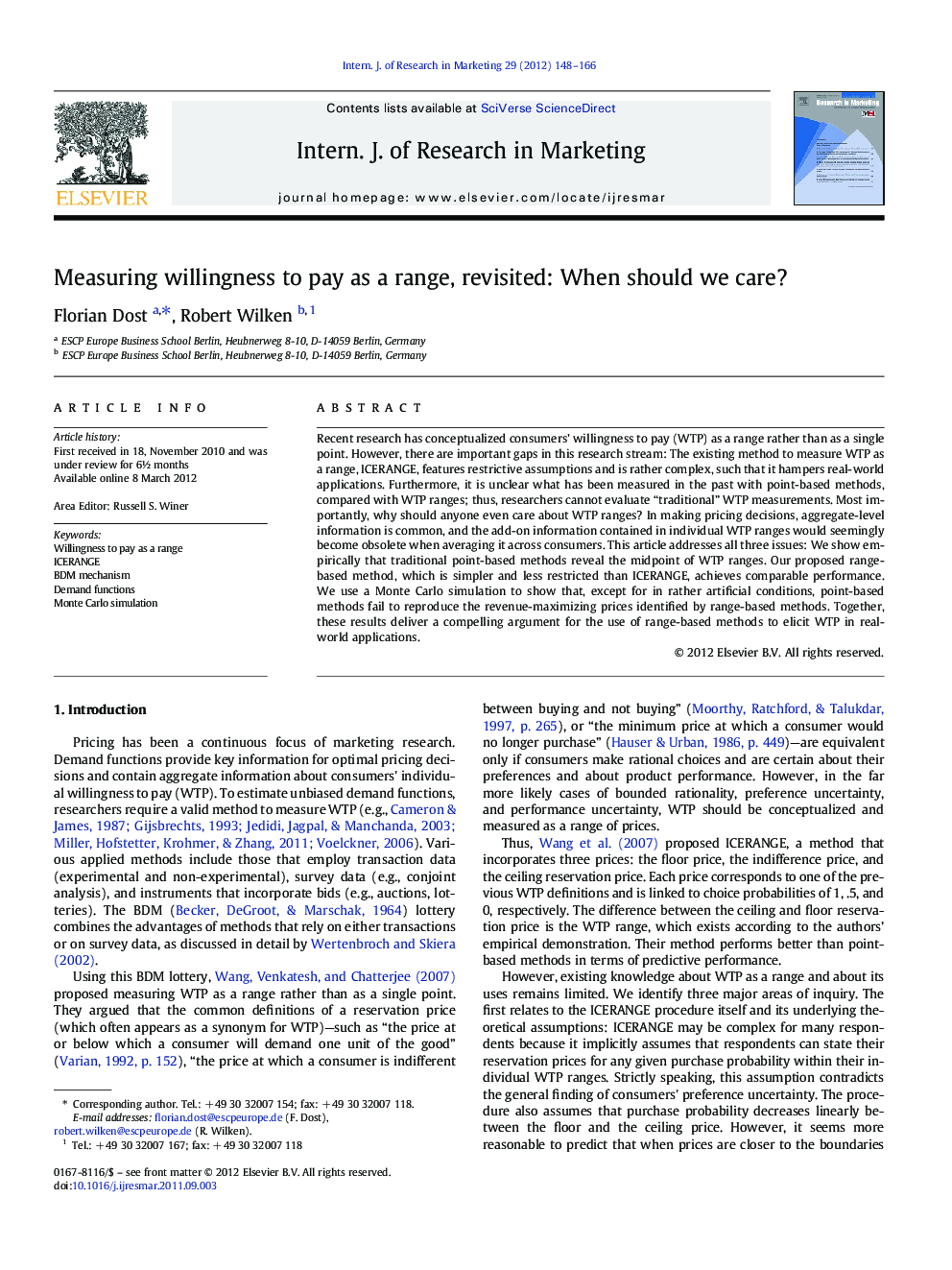| Article ID | Journal | Published Year | Pages | File Type |
|---|---|---|---|---|
| 880247 | International Journal of Research in Marketing | 2012 | 19 Pages |
Recent research has conceptualized consumers’ willingness to pay (WTP) as a range rather than as a single point. However, there are important gaps in this research stream: The existing method to measure WTP as a range, ICERANGE, features restrictive assumptions and is rather complex, such that it hampers real-world applications. Furthermore, it is unclear what has been measured in the past with point-based methods, compared with WTP ranges; thus, researchers cannot evaluate “traditional” WTP measurements. Most importantly, why should anyone even care about WTP ranges? In making pricing decisions, aggregate-level information is common, and the add-on information contained in individual WTP ranges would seemingly become obsolete when averaging it across consumers. This article addresses all three issues: We show empirically that traditional point-based methods reveal the midpoint of WTP ranges. Our proposed range-based method, which is simpler and less restricted than ICERANGE, achieves comparable performance. We use a Monte Carlo simulation to show that, except for in rather artificial conditions, point-based methods fail to reproduce the revenue-maximizing prices identified by range-based methods. Together, these results deliver a compelling argument for the use of range-based methods to elicit WTP in real-world applications.
► We compare methods to measure willingness to pay (WTP) as a point or as a range. ► Point-based methods assess expected WTP of range-based methods. ► Point-based methods fail to reproduce the range-based revenue-maximizing prices. ► We provide conditions when range-based methods are mandatory for pricing decisions. ► We also improve extant methods to measure willingness to pay (WTP) as a range.
